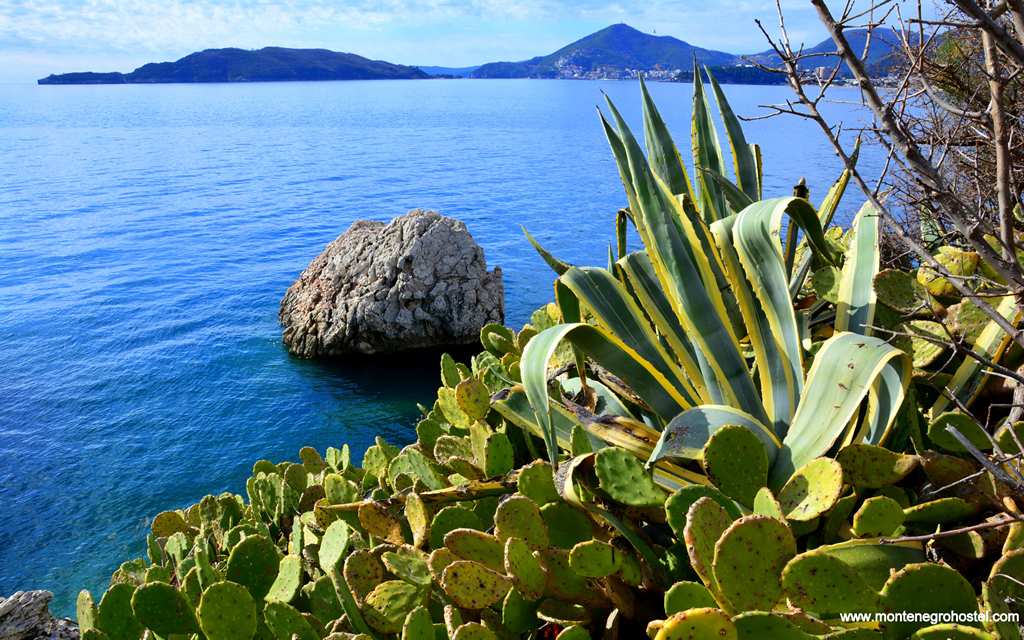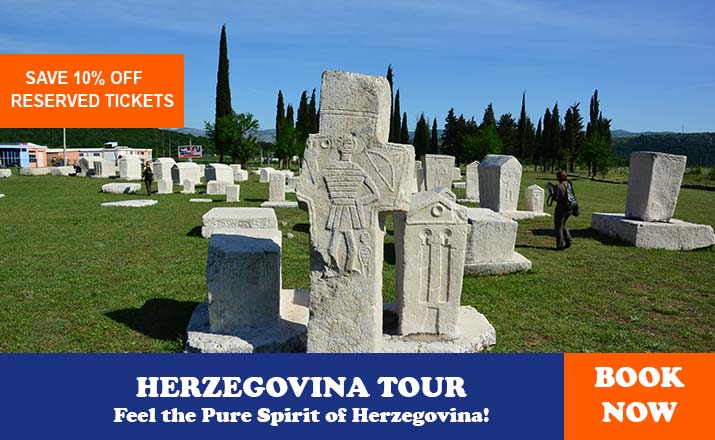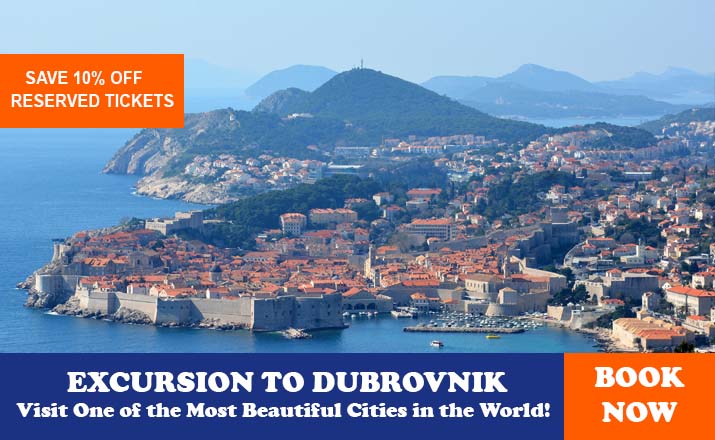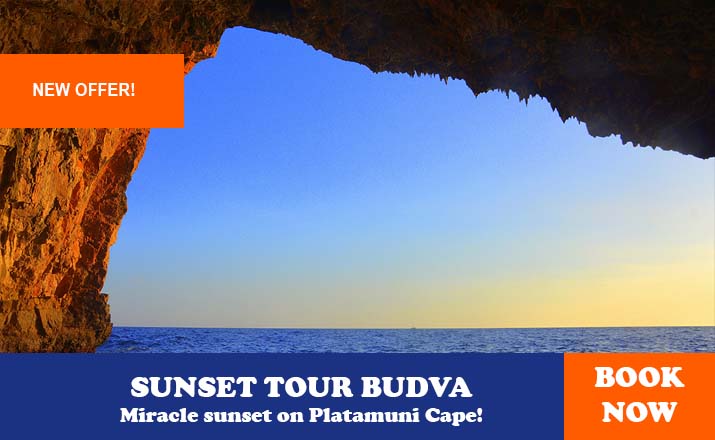ABOUT LANDSCAPE AND WILDLIFE IN MONTENEGRO
LANDSCAPE AND WILDLIFE IN MONTENEGRO
The landscape of Montenegro is extraordinarily varied primarily for the reason that from sea level to the top of the coastal mountains, there are no more than a few kilometers by air and from the sea to the main chain of the High Dinaric Alps, with peaks up to 2,500 m, no more than 50km.
The same contrast is to be observed in the climate, with conditions changing from one region to the other, forming specific associations of flora and fauna.
COASTLAND
The coastline of Montenegro is 293 km long. It has two distinct parts. In the north is Boka Kotorska (The Gulf of Kotor), a series of four basins connected by straits and ringed with hills. At its north and east edge, these hills climb almost horizontally from the sea to the peaks of Mt Orijen (1,895m) and Lovćen (1,749m).

The warm air that comes from the sea rises along the cliffs, cooling rapidly and generating rain in such quantities that it keeps the Gulf pleasantly green even in the warmest of summers and makes the highlands of the Krivošije clan the region with the most precipitation in the whole of Europe. The rest of the coastline is open towards the sea, with small numbers of plant covers and just a few tiny islands.
The feature it shares with Boka is the mountainous hinterland, which here also limits the extent of the Mediterranean climate to the narrow coastal belt. Prevalent in this region is Mediterranean vegetation of thick evergreen bushes (maquis) with many aromatic plants. Oakwoods, tall cypress trees, maritime pine, and olive groves are also found in abundance. The summers are long and hot, and the winters are mild and rainy.
SUB-MEDITERRANEAN MONTENEGRO
Between the coast of the mountain giants, the rise to the east of Podgorica and Nikšić lies the region affected to an extent by the Mediterranean climate. In its north, the extremely rugged terrain of “fierce-karst” (ljuti krš) prevails. This is an 800 m high plateau dotted with holes and scarred with small rocky valleys. The inhospitable-looking scenery is dominated by sparse shrubbery, while the hillsides rising from this tableland are almost bare.
The scattered houses of relatively numerous villages cling to the little arable land available. There are just two fields with some more land suitable for agriculture, and these are dominated by the towns of Grahovo and Cetinje. Though the region sees a lot of rain during the colder part of the year, there are no rivers or streams here as all the water quickly disappears through the porous limestone rocks. To protect themselves from the drought, the inhabitants gather rainwater in protected basins or man-made sinks.

Somewhat different from this harsh region is a region in the field of Nikšić. It is the largest karst field in Montenegro (660 square kilometers). It abounds in hydrological phenomena, getting its water from the 330 springs and losing it through 886 sinks, with 30 more estavelles and one intermittent spring.

The river Zeta also emerges here, only to sink at the edge of the field and reappear some kilometers to the south. The valley of Zeta is the narrow thread of green arable land stretching between the cliffs of the adjoining mountains from the northwest to the southeast. The river ends in the plain of Zeta (Zetska ravnica) in which lies Podgorica, the country’s capital and largest city.
Watered by the rivers Zeta, Cijevna, and Morača, this flat piece of land makes up most of the 13% of territory suitable for agriculture in Montenegro. To the south, the plain ends with Lake Skadarsko (also called Lake Scutari), the largest lake in the Balkans. As the lake considerably varies in size due to the uneven flow of water, it abounds in wetland areas rich in birds, amphibians, plants, and fish.
WILDLIFE
Due to the high demographic pressure, even in the most remote areas of the country, the wildlife of Montenegro has been seriously imperiled by hunting and exploitation. In times of peace, warriors could easily transform into skillful hunters, and carnivores had to compete with humans to protect their territory. Most threatened were the larger mammals and fish. Many small species adapted to living closer to people. Fish and birds, on the other hand, enjoyed the unpolluted environment and the variety of living habitats.
Skadarsko Lake is a major fishing ground, both commercial and recreational. The major target of anglers is the famous, exceptionally elongated and vividly colored wild form of common carp, called krap by the locals. Due to the very tasty meat, the wild carp has become very rare in most of Europe, but the population here survives in spite of the impact of heavy fishing, both legal and illegal.
Eels and mullets frequently wander into the river Bojana and Skadarsko Lake from the sea. Brow and occasionally rainbow trout are common in cold mountain rivers, many small mountain lakes, and reservoirs. Grayling can be found in most medium-large mountain rivers, while huchen is common only in the River Tara. The waters of the Adriatic are rich in Mediterranean fish species, the most common being dentex, mullet, mackerel, and hornback ray.

Sea bream is the most important kind for the fishing industry. Shrimps, lobsters, and octopuses are also to be found here. Among the most interesting kinds are flying fish (such as the gurnard), the large conger and moray eels, and seahorses. Dolphins are relatively frequently seen in the waters of the Adriatic during the summer. Very rarely, a blue shark approaches the coast, spreading unjustified terror amongst swimmers before it becomes a trophy of local fishermen. No attacks on people have been recorded, except only one 60 years ago.
The marshland of Skadarsko Lake, the area around Ada Bojana, and Šasko Lake are attractive stopping points for numerous bird species during their north-south migrations as well as for the wintering of many others. These conditions have made them into areas with the largest variety of birds in Europe, attracting waders, cormorants, pelicans, herons, ibises, bitterns, ducks, and warblers. The mountains and woods of the interior don’t lag too far behind this variety, and here one can spot eagles, owls, woodpeckers, buntings, thrushes, larks, nightingales, tits, partridges, etc. The field of salt (solana) near Ulcinj is a habitat for about a thousand flamingos.
The wild boar lives in deciduous wood all around Montenegro and is the most common target for hunters. The once numerous chamois have been reduced by hunting to rare sightings in the high mountains such as Durmitor, Komovi, or Prokletije. Mouflons have been reintroduced in the areas around Lake Skadarsko, while the renewed population of red deer in the national parks of Durmitor and Bjelasica is growing steadily. From the carnivores, the most numerous are foxes and wolves, whose presence close to human dwellings has left a clear mark in local folktales as well as plenty of names deriving from Vuk (wolf).
The coastal mountains are inhabited by jackals. Wild cats are rarely seen, while the population of brown bears is under protection and is limited to the north and east of the country. Pine and beech martens have become rare, but weasels and badgers have survived and are commonly seen close to villages and towns.

The pollution in the industrial era of major rivers has made otters one of the species under threat of extinction. Beware of the nose-horned viper (locally called poskok), recognized for the zigzag lines on its short body, one of the most venomous snakes of Europe, which inhabits the rocky areas of south and coastal Montenegro. The other poisonous snake here is the European adder (šarka) found in the continental mountains. Grass snakes are very common in Skadarsko Lake, but should not be feared as they are not poisonous.
FLORA
Montenegro's fabulous richness in plant species stems from the diversity of geographic and climatic conditions. Depending on the distance from the sea and on the latitude (both having a prominent effect on the precipitation and temperature in different seasons), Montenegro displays a surprising variety of vegetation types often occurring in proximity.

Here, one can find around 3,000 plant species (roughly twice as many as in Great Britain), some 22 being endemic and growing only in Montenegro. Some places are real botanical gardens in the wild, for example, the Biogradska Gora National Park, where a trained eye can spot 86 different trees. The diversity of microclimatic conditions is equally important. On the north sides of the highest mountains grow plants characteristic of the Arctic, on the peat bogs around the lakes, those found in the Siberian taiga, while on the steep sides of the inaccessible canyons of Tara or Piva, there are species that survive here from the time of the last Ice Age.

The coastland sees flowers blossoming already from January, starting with the mimosa in whose honor the festival in Herceg Novi takes place. By the beginning of May, nature is in full bloom. Given that the coastal areas have been under human influence for several millennia, it is not possible to deduce with certainty which species were introduced and which are native to the region. Most likely, the natives lived in various kinds of evergreen and semi-deciduous oak and coniferous forests of several species of juniper, pine, and possibly cypress, as well as maquis in more exposed areas. Today, figs and olives, introduced by local people, dominate the area.

Further from the sea, the sub-Mediterranean zone is more exposed to continental influences. The evergreen forests are replaced by deciduous forests of oak (mostly dark oak), manna ash, and Oriental hornbeam. Further inland areas low and mid-altitude areas are dominated by temperate continental deciduous forests, with most of the birch.

Cold and wet high mountains are covered by the thick coniferous forest of spruce, fir, and pine. Several rare tree species make Montenegro their home, among which are white-bark and Macedonian pines, Macedonian oak, and Turkish hazel.
Montenegro Hostel Team














































